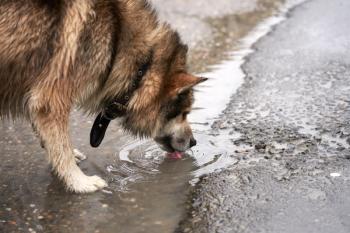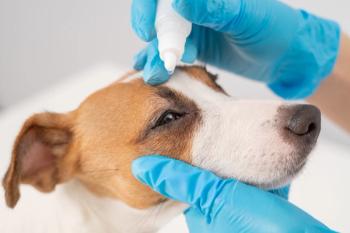
Basic approach to evaluating solid tissue tumor cytology (Proceedings)
An epidermal, dermal, or subcutaneous mass lesion that is easily accessible to aspiration cytology
Lump or bump
An epidermal, dermal, or subcutaneous mass lesion that is easily accessible to aspiration cytology
Goal of aspiration cytology
• To direct next step of therapy or diagnostics (at the minimum)
• To definitively diagnose the cause of the lesion
• To advise owners of most probable process
What makes it a lump?
• Expansion of tissue
• Tissue fluid
• Infiltration cells
• Overgrowth of resident cells
Overall question
• What is the process that is causing this expansion?
• Subquestions:
o What is the treatment?
o What is the prognosis?
Obtaining the sample
• Fine needle biopsy (aspirates)
o Preferred method for masses
• Impression smear
• Scraping
• Swab
Staining
• Romanowsky stains
o Metachromatic reaction
• Romanowsky-like stains (Diff-Quik)
o Mast cells may not stain
What is the general process?
• Tissue fluid
• Cells
o Inflammatory
o Neoplastic
Fluid/cysts
• Keratin containing cysts
• Hematoma
Inflammation
• Identify leukocytes
• Search for and identify etiologic agents
What is the identity of the tissue on the preparation?
• Discrete: no cell to cell association
• Epithelial: tight clusters of round-ish cells
• Mesenchymal: loose aggregates of fusiform cells
Interpretation of samples
• Inflammatory versus neoplastic
• Neoplastic
o Histogenesis: from what tissue has it arisen?
o Benign v. malignant
Neoplasia histogenesis
• Discrete
• Epithelial
• Mesenchymal
Discrete neoplasms
• Lymphoma
• Mast cell tumor
• Histiocytoma
• Transmissable venereal tumor
• Malignant histiocytosis
• Plasmacytomas
• +/- melanoma
Mesenchymal neoplasms
• Dogma: poorly exfoliating
• Groups of cells appear off a "stalk"
• Many cells are individualized
• Fusiform shape
Epithelial neoplasms
• Sheets or clumps
• Acinar or ductal structures
• Round to polygonal versus fusiform/spindle
Criteria of malignancy
• Anisocytosis/anisokaryosis
• Pleomorphism
• Macrokaryosis (nuclei >10 microns)
• Increased nuclear to cytoplasmic ratio
• Multinucleation
• Abnormal mitoses
• Nuclear molding
• Macronucleoli
• Angular nucleoli
Specific lesions
• Lipoma: What if you had something then you have nothing?
• Sebaceous gland adenoma
• Masses on the south end (of a dog going north)
o Two choices: apocrine gland adenocarcinoma or perianal gland tumor
• Histiocytoma
• Mast cell tumor
• Plasma cell tumor
• Epidermal or adnexal epithelial neoplasia
• Keratin containing cyst
Newsletter
From exam room tips to practice management insights, get trusted veterinary news delivered straight to your inbox—subscribe to dvm360.




